Disease or not?
 Hi again. I’ve been back home in the Netherlands for exactly two weeks, and there has been so little time for anything…so I have not posted anything. Lots of course work to catch up on. One new class started last week, and I had to prepare my lectures…with eye-catching Powerpoint animation, jokes that might seem funny to 21-year old Dutch students, and oh yeah, all that neuroanatomy that had gotten slightly rusty… I was a bit nervous. There were 300 of them sitting there chatting while I was standing at the podium clearing my throat. English is their second language, one they had to learn in high school. And Neuropsychology 101 isn’t intrinsically entertaining to everyone. The text book was dry, so was my throat, and how was I going to say anything comprehensible and interesting enough to get their attention off their cell phones?!
Hi again. I’ve been back home in the Netherlands for exactly two weeks, and there has been so little time for anything…so I have not posted anything. Lots of course work to catch up on. One new class started last week, and I had to prepare my lectures…with eye-catching Powerpoint animation, jokes that might seem funny to 21-year old Dutch students, and oh yeah, all that neuroanatomy that had gotten slightly rusty… I was a bit nervous. There were 300 of them sitting there chatting while I was standing at the podium clearing my throat. English is their second language, one they had to learn in high school. And Neuropsychology 101 isn’t intrinsically entertaining to everyone. The text book was dry, so was my throat, and how was I going to say anything comprehensible and interesting enough to get their attention off their cell phones?!
It didn’t go badly after all. I really got into talking about the brain. I pranced around the stage, pointing to different spots on my head and extolling the marvels of this self-organizing system of rapidly emerging subnetworks, that are the physical basis of all experience, a system that is designed to be underdesigned (because we need to learn almost everything we know — and that requires massive reorganization), and I’m talking about 20 billion or so cortical neurons, ladies and gentlemen, dames en herren, with 1,000 or more connections. EACH! That’s at least 20 trillion nodes, each node affected by complex concoctions of neurotransmitters, which tune them, just so, influencing how much information gets through, what kind of information gets through, and how we FEEL about that information…
Someone (I think Joseph Ledoux) boldly said: You ARE your synapses. That shifting configuration of tiny electrochemical connections: that’s YOU!
They were happy and smiling at the end. A good sign, I thought, except maybe they just liked watching me stride about tapping myself on the head. I had to wonder what was getting through to them.
I wondered the same thing, a week and a half ago, while participating in an hour-long talk show, via Skype. It’s called The Agenda with Steve Paiken, and a lot of Canadians watch it. So I was a bit nervous that night too. Behind me the camera picked up vague shapes in a dark, messy living room — watching it afterward, I thought I looked like a resident in some unlit chamber of hell, compared to the bright faces in the studio in Toronto. But the real problem was that one of the three other guests was an MD, a psychiatrist, named Peter Selby — a guy who does both research and clinical work — at this psychiatric/addiction institute in Toronto. CAMH, it’s called, I mentioned it in my last post. And he, like many of his colleagues, really sees addiction as a disease. But I don’t. So we argued about it. It was all quite civilized, but we weren’t seeing eye to eye. And yet he had some good points.
Politics and pontification aside, am I really so sure that addiction is NOT a disease? This is a topic that I’ve gotten into before, but not in much depth. I know how to talk the talk. I’m used to arguing cleverly that the “disease concept” of addiction is really just a metaphor, and a sloppy one at that. It can be useful. It helps us refrain from beating ourselves up if we think we’ve got a disease. But maybe it robs us of the sense that we can overcome it through our courage and our creativity — something you can hardly do with a real disease. I have some good sound bites… like: if addiction is a disease, then you must CONTRACT it at some point, and then you HAVE it, and then you GET treatment, and if the treatment works, then you’re CURED. And if it doesn’t, you have the disease until you die. I can talk like that, and I can smugly conclude that those are NOT the characteristic features of addiction. But now I’m not so sure, and I wonder if I’m the one being too superficial, too mentally lazy, to give this matter the attention it deserves.
Because Selby was right about one thing: “disease” is not such a simple black-and-white concept. Take Type 2 diabetes. You don’t catch it or otherwise contract it. Rather, it grows — it’s really a developmental disorder that comes about when people make bad choices about what they eat. Or live in unhealthy environments. And it’s not something you try to cure, it’s something you try to treat. The same could be said for quite a few “medical” diseases. Like high blood pressure? Like colitis or irritable bowel syndrome? Like carpal tunnel syndrome? When I’m on an anti-disease rant, I often fall back on the argument that brains change with development, they change with experience, they’re supposed to change: learning changes the brain, addiction is a kind of learning, it’s highly accelerated, it’s very focused, but it’s still a process of learning. So I’m thinking, diabetes, colitis….do they change the structure of your body too? Well, of course they do. And yet your body isn’t supposed to change in those ways. Aha! I’ve clinched the argument. Except that I have this intrusive thought: brain changes that come about with addiction are NOT so natural after all. Sure, the brain — especially the cortex and limbic system — is designed for its mutability. It’s supposed to be able to change with learning. But it’s not supposed to change so much that you can’t secrete dopamine in the ventral striatum without focusing on your drug or drink or sexual obsession or food obsession of choice. That’s a pretty fucked up brain, even if it got that way through a “natural” “developmental” process. So…is the outcome of addiction really distinguishable from what we call a disease?
I’m not going to go further with this tonight. But what do you guys think? Please share your ideas before I share more of mine. Yet we all have to try to leave our politics at the door before we get into this. Because the 12-step versus do-it-yourself versus the self-medication approach versus the “choice” position — all those territorial disputes take our attention away from the fundamental issue, the thing we really need to focus on. Which is: what is addiction? What is it really?



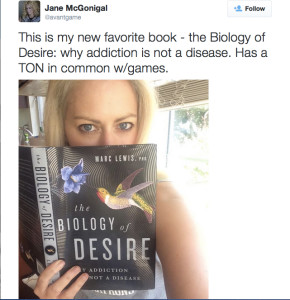
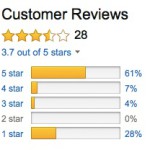
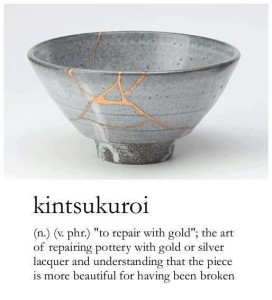
 Johann Hari, as revisited in
Johann Hari, as revisited in  So those are a few of the headline topics that we can deal with this year. And there are others. With Trump in the US,
So those are a few of the headline topics that we can deal with this year. And there are others. With Trump in the US,  What is going on in terms of the international pendulum swing between draconian repressive approaches and the ever-more-
What is going on in terms of the international pendulum swing between draconian repressive approaches and the ever-more- enlightened drug policies of countries (like the UK, Canada, and Australia) where people are stepping away from the “brain disease” model and the nasty habit of throwing addicts in jail? Cannabis will soon be legal throughout both Canada and the US! And it seems they’re
enlightened drug policies of countries (like the UK, Canada, and Australia) where people are stepping away from the “brain disease” model and the nasty habit of throwing addicts in jail? Cannabis will soon be legal throughout both Canada and the US! And it seems they’re  Companies with ties to multiple other entities and those that have major influence on the healthcare economy are able to skirt the rules and make deals with federal agencies or court systems to avoid serious legal repercussions. Pfizer, one of the world’s largest pharmaceutical companies, marketed a drug called Bextra in 2001, a Cox-2 inhibitor. While the FDA rejected the drug at high doses for acute surgical pain, Pfizer and its marketing partner Pharmacia pitched it to anesthesiologists and surgeons anyway — at doses up to
Companies with ties to multiple other entities and those that have major influence on the healthcare economy are able to skirt the rules and make deals with federal agencies or court systems to avoid serious legal repercussions. Pfizer, one of the world’s largest pharmaceutical companies, marketed a drug called Bextra in 2001, a Cox-2 inhibitor. While the FDA rejected the drug at high doses for acute surgical pain, Pfizer and its marketing partner Pharmacia pitched it to anesthesiologists and surgeons anyway — at doses up to 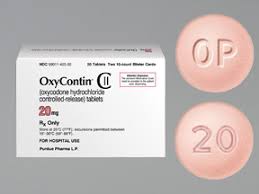 breakthrough in pain management. The active ingredient of OxyContin is oxycodone, a long-lasting narcotic with
breakthrough in pain management. The active ingredient of OxyContin is oxycodone, a long-lasting narcotic with 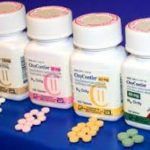 In order to shift this perception, Purdue Pharma launched a
In order to shift this perception, Purdue Pharma launched a  In an effort to maximize the efficacy of their marketing efforts, Purdue
In an effort to maximize the efficacy of their marketing efforts, Purdue  2001) led to a tremendous increase in the number of visits to physicians with higher than average rates of opioid prescription. While pitching OxyContin, sales representatives for Purdue even reportedly claimed to some healthcare providers that the drug, now frequently compared to heroin in terms of potency and risk of addiction,
2001) led to a tremendous increase in the number of visits to physicians with higher than average rates of opioid prescription. While pitching OxyContin, sales representatives for Purdue even reportedly claimed to some healthcare providers that the drug, now frequently compared to heroin in terms of potency and risk of addiction,  ineffective. Patients can help by never sharing or selling prescription pain medications, and by taking steps to ensure that they are the only ones with access to their painkillers. Friends and loved ones can help by monitoring patients for correct usage of prescription pain medications, staying alert for any signs of prescription drug overuse, and questioning and challenging potentially dangerous habits before they become entrenched. The battle can be won, but we all must fight together.
ineffective. Patients can help by never sharing or selling prescription pain medications, and by taking steps to ensure that they are the only ones with access to their painkillers. Friends and loved ones can help by monitoring patients for correct usage of prescription pain medications, staying alert for any signs of prescription drug overuse, and questioning and challenging potentially dangerous habits before they become entrenched. The battle can be won, but we all must fight together.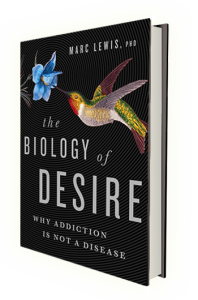 Informed by unparalleled neuroscientific insight and written with his usual flare, Marc Lewis’s The Biology of Desire effectively refutes the medical view of addiction as a brain disease. A bracing and informative corrective to the muddle that now characterizes public and professional discourse on this topic.” —Gabor Maté, M.D., author of In The Realm of Hungry Ghosts: Close Encounters With Addiction
Informed by unparalleled neuroscientific insight and written with his usual flare, Marc Lewis’s The Biology of Desire effectively refutes the medical view of addiction as a brain disease. A bracing and informative corrective to the muddle that now characterizes public and professional discourse on this topic.” —Gabor Maté, M.D., author of In The Realm of Hungry Ghosts: Close Encounters With Addiction
Recent Comments